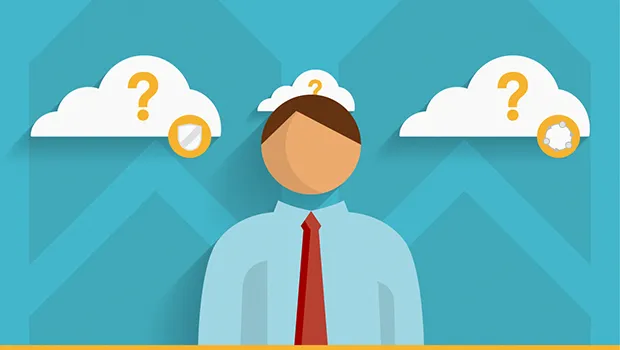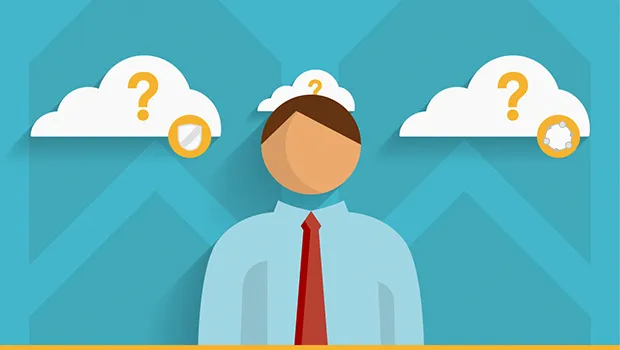Edge computing for beginners: 11 key concepts
Blog: The Enterprise Project - Enterprise Technology
As organizations deploy an increasing number of Internet of Things (IoT) devices and connectivity grows more sophisticated, an edge computing ecosystem made up of billions of devices and servers is emerging. “Performing data analytics and generating quick actionable insights from the same at the place of data creation has become the key,” says Manali Bhaumik, lead analyst at technology research and advisory firm ISG. “[Edge computing] is changing the way data is being processed and end results are being delivered.”
If edge computing is not already on an IT leader’s roadmap, it likely will be soon. "Many trailblazing enterprises are adopting edge to complement existing cloud infrastructure and better manage today’s ever-increasing volume of big data,” says David Williams, managing principal at digital consultancy AHEAD.
[ Want to learn more about implementing edge computing? Read the blog: How to implement edge infrastructure in a maintainable and scalable way. ]
11 edge computing questions and concepts
If you need to get up to speed on key edge concepts - or educate others in your organization - check out these key concepts and questions, explained in plain terms, by edge experts.
1. What is edge computing?
Think of a measurement device at an oilfield or a remote telecommunications facility: Edge computing brings the data crunching closer to where the data is collected.
“For edge devices to be smart, they need to process the data they collect, share timely insights and if applicable, take appropriate action. Edge computing is the science of having the edge devices do this without the need for the data to be transported to another server environment,” as Red Hat chief technology strategist E.G. Nadhan explains. “Put another way, edge computing brings the data and the compute closest to the point of interaction.”
[ Get a shareable primer: How to explain edge computing in plain English.]
2. What problems does edge computing solve?
“Fueled by emerging use cases like IoT, AR/VR, robotics, machine learning, and telco network functions that require service provisioning closer to users, edge computing helps solve the key challenges of bandwidth, latency, resiliency, and data sovereignty,“ says Rosa Guntrip, senior principal marketing manager, cloud platforms at Red Hat.
“It complements the hybrid computing model where centralized computing can be used for compute-intensive workloads while edge computing helps address the requirements of workloads that require processing in near real-time," Guntrip adds.
3. How many enterprises are using edge and what is the future outlook?
By 2023, more than half of new enterprise IT infrastructure deployed will be at the edge rather than corporate data centers, up from less than 10 percent today, according to IDC. The number of apps at the edge will increase 800 percent by 2024, IDC predicts. “It is an acknowledgment that a centralized approach to infrastructure has limitations, whether that be a corporate data center or public cloud,” says Dave McCarthy, research director in IDC’s worldwide infrastructure practice focusing on edge strategies.
“Instead, enterprises are now looking at edge computing as a way to distribute workloads to locations where they run best,” McCarthy says. “This could be metro-level colocation facilities; remote and branch offices; or industry-specific locations like factories, warehouses, hospitals, and retail stores.”
4. Edge is not a device: It's an architectural decision
Moving computing and storage to the edge of the network speeds up communications. This is particularly important when dealing with massive amounts of dynamic data, explains Craig Wright, managing director with management consultancy Pace Harmon.
“As more activity gets digitized, the need for real-time processing is growing,” adds Seth Robinson, senior director of technology analysis at technology association CompTIA. “More and more activity using IoT technology requires extremely low latency in order to function properly.”
With edge computing, the most critical data is transmitted between an endpoint and a nearby location for data analysis and decision-making while less critical tasks can still go to a primary cloud facility or an on-premises data center. “Using edge computing gives companies the opportunity to imagine new applications and also manage costs related to data bandwidth,” Robinson says.
[ Read also: Edge computing: 4 common misconceptions, explained, by Gordon Haff. ]
5. What benefits does edge computing provide?
“Modern applications can be built [without edge computing],” says Stephen Blum, CTO of infrastructure-as-a-service provider PubNub. “However, edge compute will give an edge over your competition. Data is closer to your users and allows for faster application speeds for better user experiences.“
New data privacy regulatory rules require treatment of data differing state by state and by country, and edge technologies can aid with compliance, Blum adds.
Other edge drivers include the use of latency-sensitive applications or assets with limited connectivity, scalability concerns around the abundance of data generated for analytics and AI use cases, and the costs of transmitting data for centralized processing, says McCarthy.
6. Edge complements cloud but does not replace it
Think of edge as an extension of the cloud rather than a replacement, says Robinson. In fact, edge is a key enabler for unlocking the full power of data in the cloud. Data from various connected devices in the IoT ecosystem are collected in a local device, analyzed at the network, and then transferred to the central data center or cloud, ISG’s Bhaumik explains.
However, “to harness the combination of cloud and edge computing solutions, workloads must be containerized and distributed across multiple cloud, as-a-service, edge servers, and edge devices,” Wright of Pace Harmon says.
Let’s look at five more key facts on edge computing:
7. Edge computing requires significant upfront planning
“There must be careful attention to how virtual and physical objects and workloads will be distributed and how security will be addressed, while maintaining scalability and reliability across an ecosystem typically comprising thousands of highly diverse and dynamic elements,” says Wright.
At a minimum, Wright continues, edge computing solutions must manage workloads across smart object and cloud platforms autonomously, be independently secure, and allow for the testing and demonstration of scalability and effectiveness using big data and real-time use cases.
IDC’s McCarthy recommends that IT leaders think of the edge as an extension of core infrastructure. “You want a common development platform, security framework, and management tools,” McCarthy says. “The good news is that most IT suppliers are building edge features into their offerings.”
8. Data latencies can still be a concern
Even the slightest delay in information processing could affect connected ecosystems, especially in industries like oil and gas, manufacturing, financial services, and healthcare. “The flow of data and the transfer time determine the health of functions and systems in these industries and the slightest delay can affect the entire process,” Bhaumik says.
9. Faster technologies like 5G will supercharge the edge
5G networks will enable edge computing to provide faster data generation support. “If a video camera is capturing continuous data and information is being generated, it can be monitored easily; but with multiple cameras across a network, latency and cost issues would affect the ecosystem due to bandwidth usage,” says Bhaumik. “The problem would multiply with larger connected ecosystems, like autonomous vehicles or smart city ecosystems, where a huge number of machines and devices are interconnected and data is being captured every second.”
10. Edge gateways are emerging
“With the growing popularity of edge computing, it has become increasingly important to manage the process,” says Bhaumik. That’s where gateways come in. “The offerings in this space are growing, and providers are aggressively providing new services to improve the synchronization between cloud and edge handling.
“Edge hardware devices and services are making localized storage and data processing easy and the edge gateway would filter data for storage in the cloud or central repository,” Bhaumik says. Providers are becoming increasingly aware of the importance of edge computing in the connected ecosystem space. Partnerships and collaborations are expected to take place in most IoT implementations over the coming months.
11. Edge computing benefits from a partner ecosystem
“It’s impossible for one company to do everything. The devices, the networking, the IoT platform, production assets – there are so many moving parts,” says Yugal Joshi, vice president at management consultancy and research firm Everest Group. “So you need an ecosystem mindset from both an enterprise IT standpoint and from the vendors to make this a success.”
[ Why does edge computing matter to IT leaders – and what's next? Learn more about Red Hat's point of view. ]
Primary Image:

